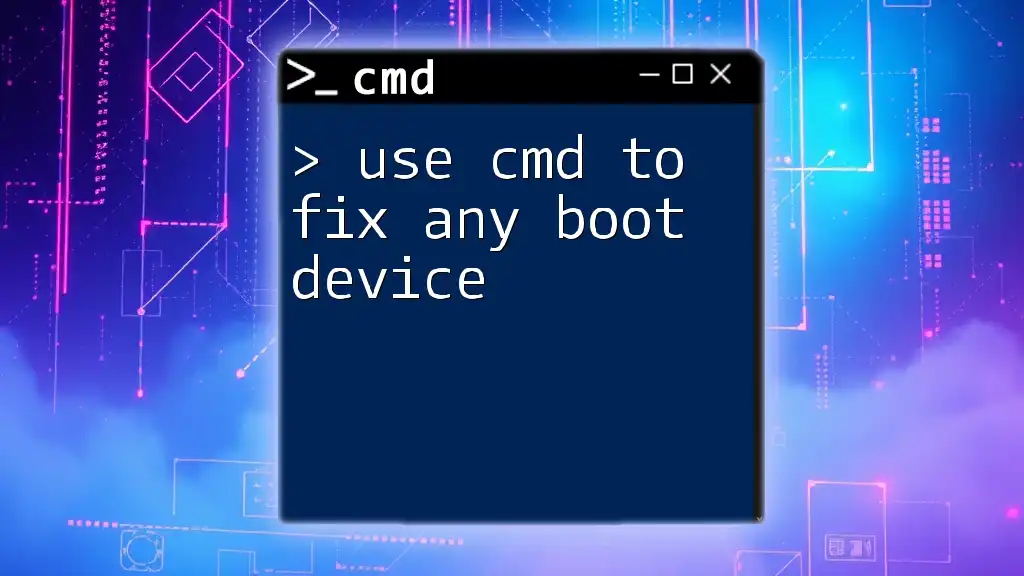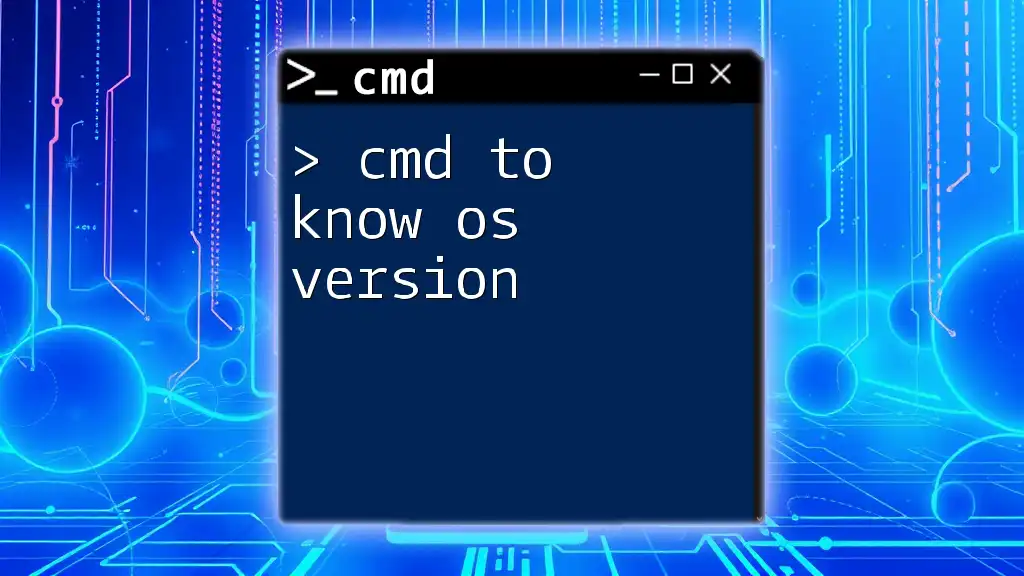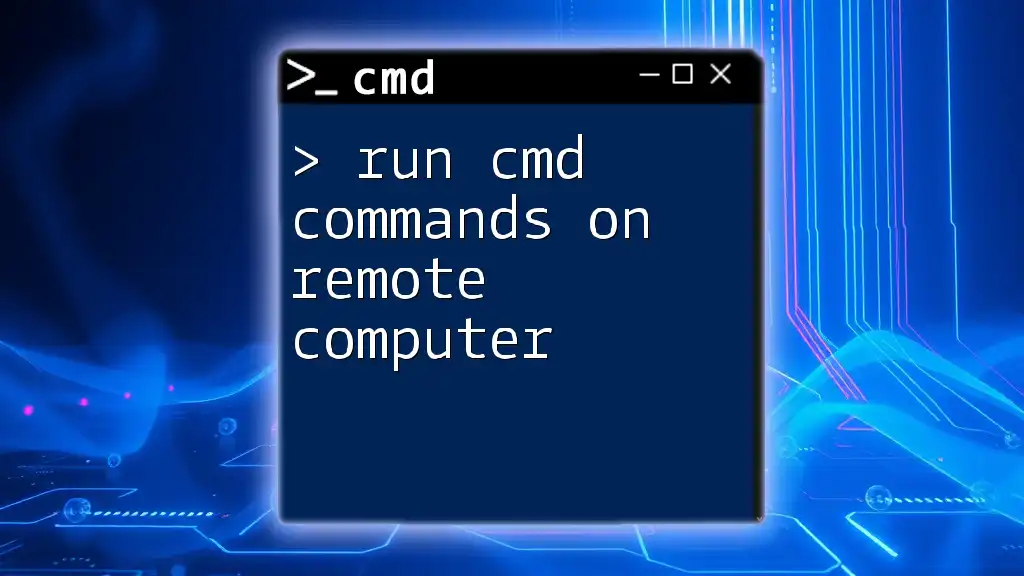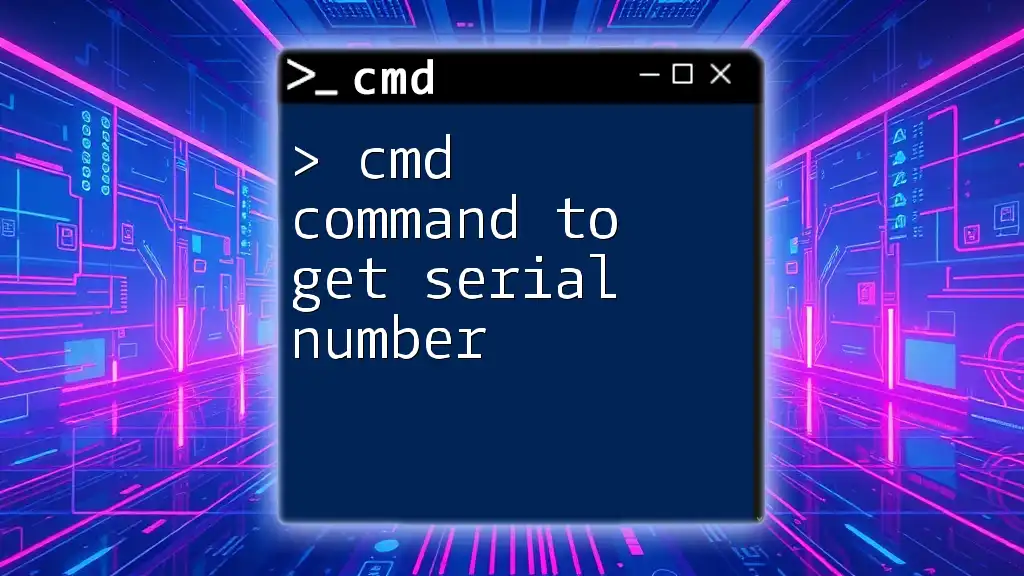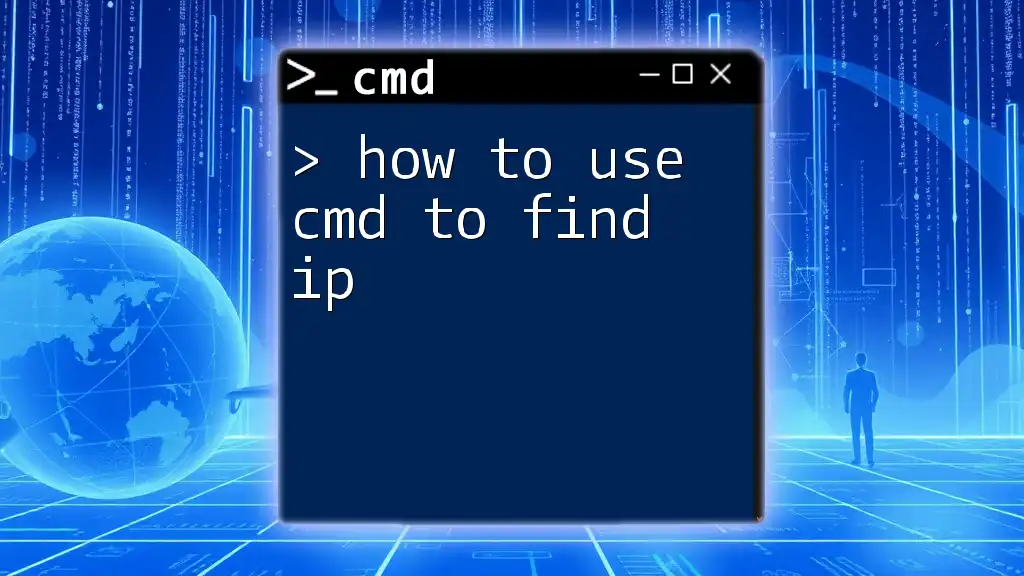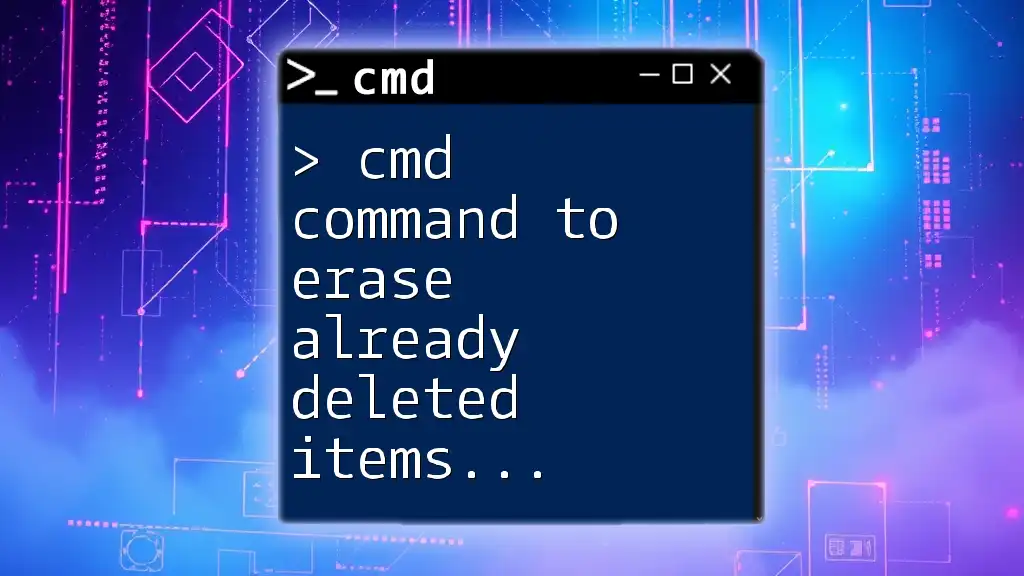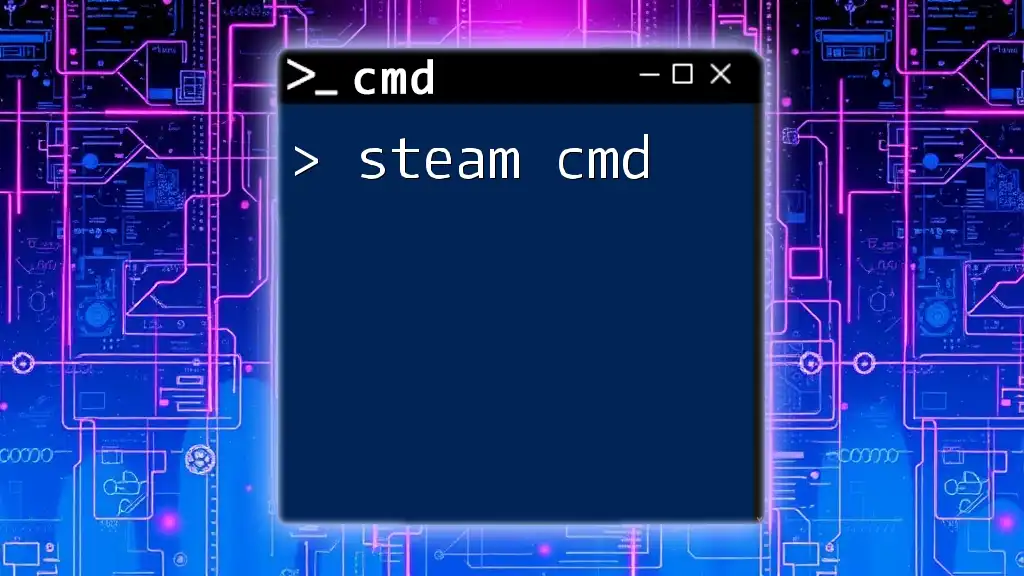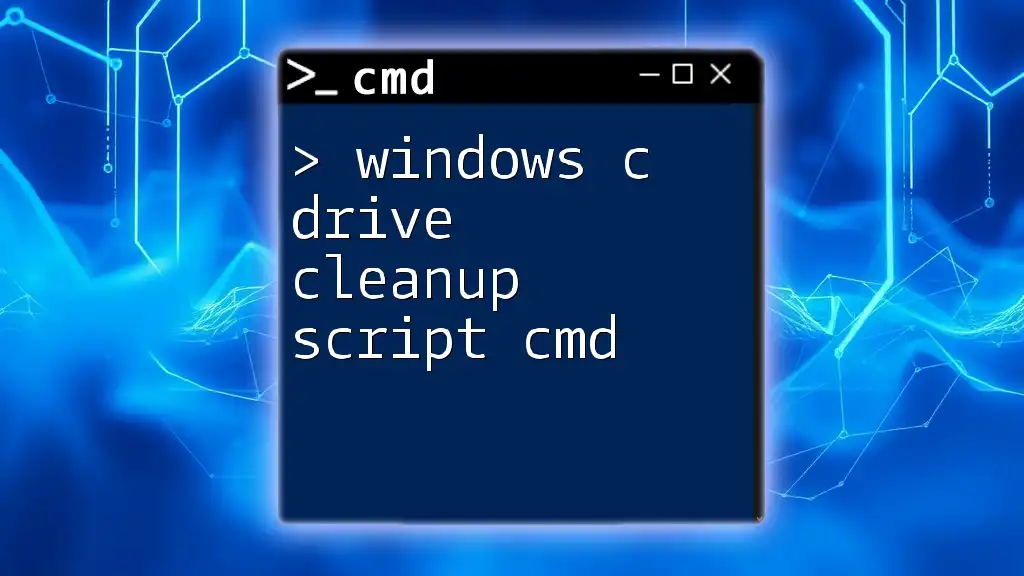You can use CMD to fix boot device issues by executing the Bootrec command to repair the Windows Boot Manager. Here's a code snippet you can use:
bootrec /fixmbr
bootrec /fixboot
bootrec /scanos
bootrec /rebuildbcd
Understanding Boot Device Problems
What is a Boot Device?
A boot device is an essential component of your computer, responsible for loading the operating system during startup. Common types of boot devices include:
- Hard Drives: Traditional storage devices that store your OS and files.
- Solid State Drives (SSDs): Faster storage alternatives that improve boot times.
- USB Drives: External devices that can be configured as boot devices for installations or repairs.
Symptoms of Boot Device Issues
Recognizing the signs of boot device problems is crucial in addressing them effectively. Common symptoms include:
- Error Messages: Alerts such as "No Boot Device Found" indicate a failure to locate an operating system.
- Stuck on BIOS Screen: If your computer consistently hangs at this stage, it signals a boot device issue.
- Boot Loops and Crashes: Repeatedly restarting without loading the OS can be frustrating and indicates deeper problems.
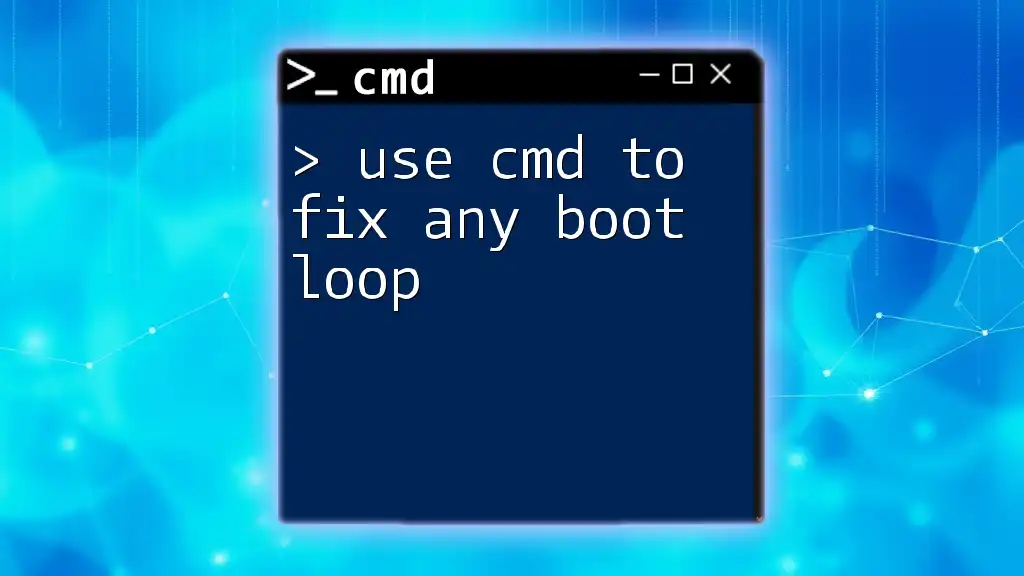
Preparing to Use CMD
Accessing CMD
To resolve boot device issues, accessing the Command Prompt (CMD) from the Windows Recovery Environment is necessary. Here’s how to do it:
- Restart your computer and interrupt the boot process three times to trigger Windows Recovery.
- On the recovery screen, navigate to Troubleshoot > Advanced options > Command Prompt.
Once you reach CMD, you're equipped to troubleshoot your boot device issues.
Backup Your Data
Before executing any commands, it's vital to back up your data. Boot issues can sometimes lead to data loss. The quickest way to back up data using CMD includes executing commands to copy essential files to an external drive. This ensures that you can recover important information if the repair process affects your data.
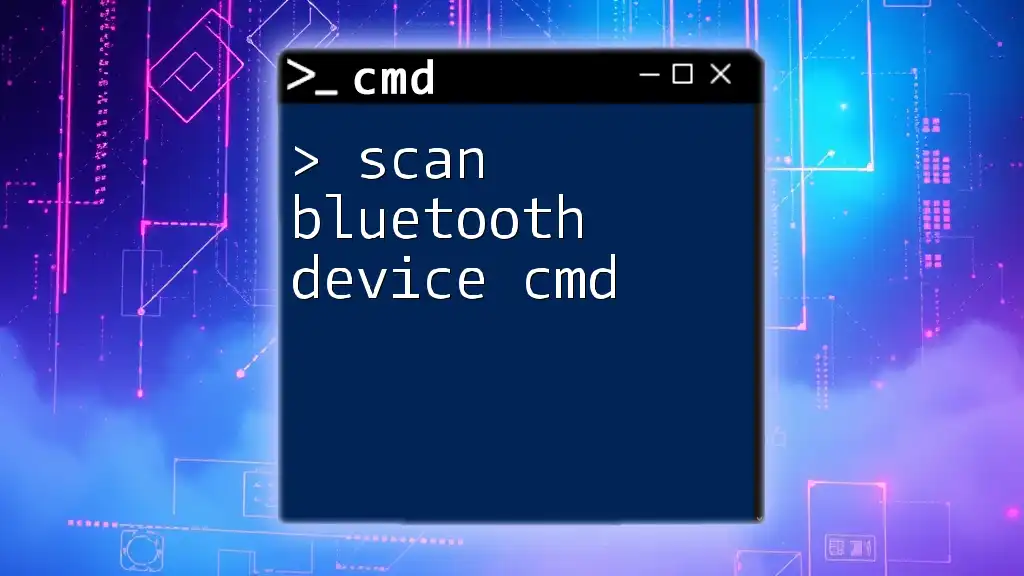
Using CMD Commands to Fix Boot Device Issues
Check Disk Utility
The Check Disk (chkdsk) utility is your first line of defense against disk errors. By running the following command, you can scan and repair file system issues:
chkdsk C: /f /r
- `C:` refers to the drive letter you want to scan (usually the primary drive).
- `/f` fixes errors on the disk.
- `/r` locates bad sectors and recovers readable information.
This command is particularly useful if you suspect that corrupted file systems are causing your boot issues. If successful, you’ll see a message confirming that chkdsk has repaired errors, allowing your boot device to function properly.
Boot Configuration Data (BCD) Repair
The Boot Configuration Data (BCD) provides essential information about the boot process. A misconfigured BCD can prevent your operating system from loading. To repair it, use the following command:
bootrec /rebuildbcd
Follow these steps:
- Type the command and press Enter.
- Wait for a completion message indicating that the operation was successful.
If there are issues with loading BCD, you may encounter error messages. In such cases, further diagnostics or commands may be needed.
Master Boot Record (MBR) Fix
The Master Boot Record (MBR) is vital for any booting operation. If MBR becomes corrupt, use these commands to fix it:
bootrec /fixmbr
bootrec /fixboot
- The `/fixmbr` command repairs the MBR, ensuring your disk is accessible at startup.
- The `/fixboot` command writes a new boot sector.
Execute these commands step by step, and if successful, your system should be able to locate the boot device and proceed as expected.
System File Checker
The System File Checker (SFC) tool scans and repairs corrupted system files that may hinder your computer's ability to boot. To run it, execute the following command:
sfc /scannow
This command checks the integrity of protected system files and replaces any corrupted files it encounters. It’s particularly effective for fixing boot issues related to system file corruption. Once the scan is complete, you'll receive a message detailing whether any issues were found and fixed.

Advanced CMD Commands for Boot Issues
Diskpart Utility
When boot problems persist, using the diskpart utility might be necessary. This command will let you manage disks and partitions:
diskpart
- After entering the diskpart environment, type `list disk` to view all disks on your system.
- Identify the disk needing attention and select it with `select disk 0` (replace 0 with the appropriate disk number).
- If a partition needs to be activated, type `active`.
Using diskpart correctly can reconfigure issues preventing the boot device from being recognized.
Assigning Drive Letter
In some cases, your boot device may not have an assigned drive letter, making it unusable. To assign a drive letter, use:
assign letter=X
This command allows you to specify a letter (replace X with your desired letter) for quick access and recognition during the boot process.
Rebuilding the Boot Sector
If you conclude that rebuilding the boot sector is necessary, execute the following command:
bootsect /nt60 SYS
This command is particularly useful if you have upgraded from an earlier version of Windows and need to restore the boot sector for the system drive.
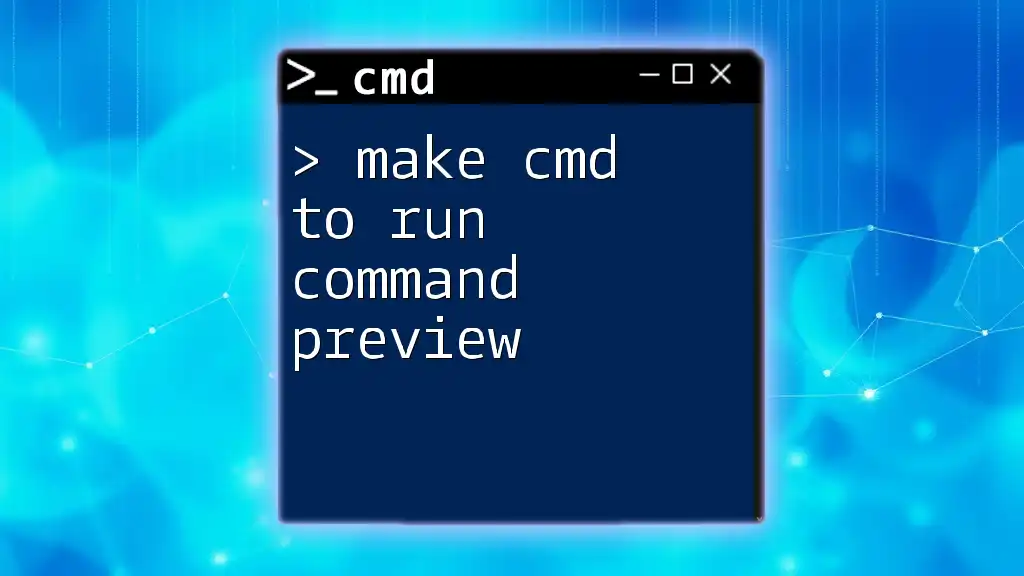
Testing and Verification
Restarting the System
Once you have executed the necessary commands, it’s time to restart your system. To do this safely, simply type `exit` in CMD and reboot your computer. Observe if the boot issue persists; in many cases, your device should begin normally.
Further Troubleshooting
If problems remain, consider rerunning the commands, verifying input accuracy, and checking for physical damage to hardware components. Having a comprehensive understanding of alternative CMD commands may also assist in isolating the issue further.
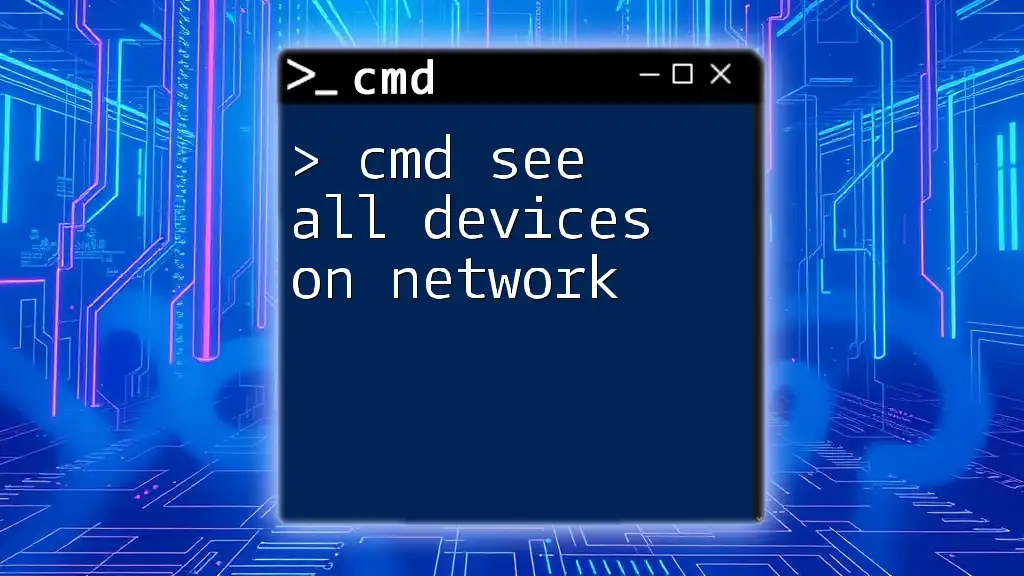
Best Practices for Future Prevention
To prevent boot device issues from occurring in the future:
- Regular Maintenance: Periodically run chkdsk and sfc to ensure the health of your drive and system files.
- Keep System Files Updated: Regular system updates address bugs that may affect the boot process.
- Create a Recovery Drive: This can serve as a safety net, ensuring that you can quickly address boot issues should they arise again.
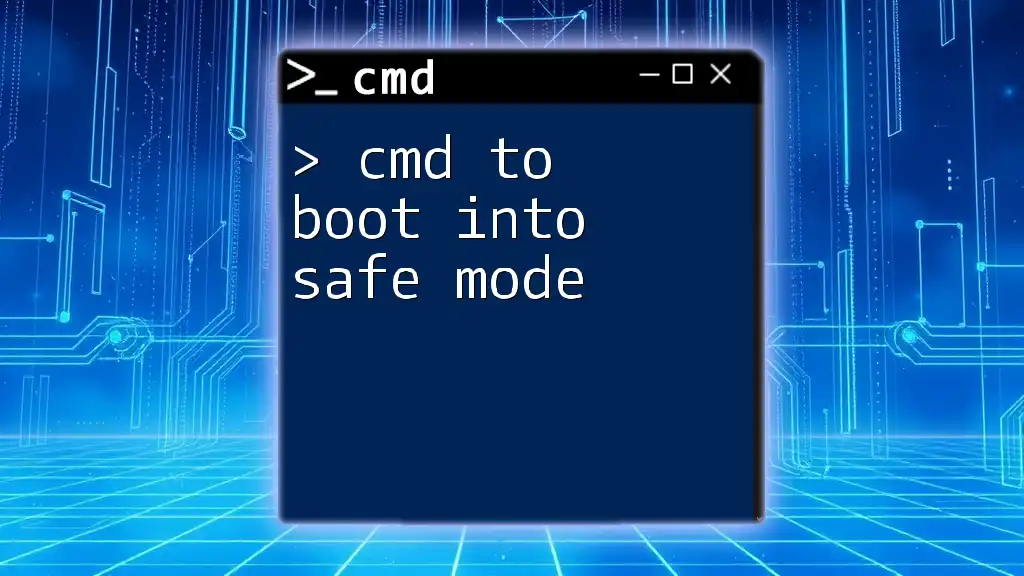
Conclusion
Mastering how to use CMD to fix any boot device is a valuable skill for troubleshooting and maintaining your computer effectively. By familiarizing yourself with these commands, you empower yourself to take control of your device’s boot process, ensuring a smoother startup in the future. As an additional learning path, explore more CMD commands and their functions to deepen your troubleshooting skills and system knowledge.

